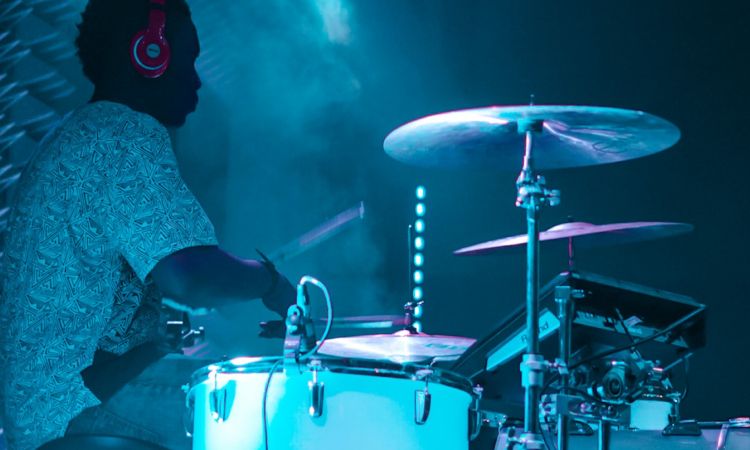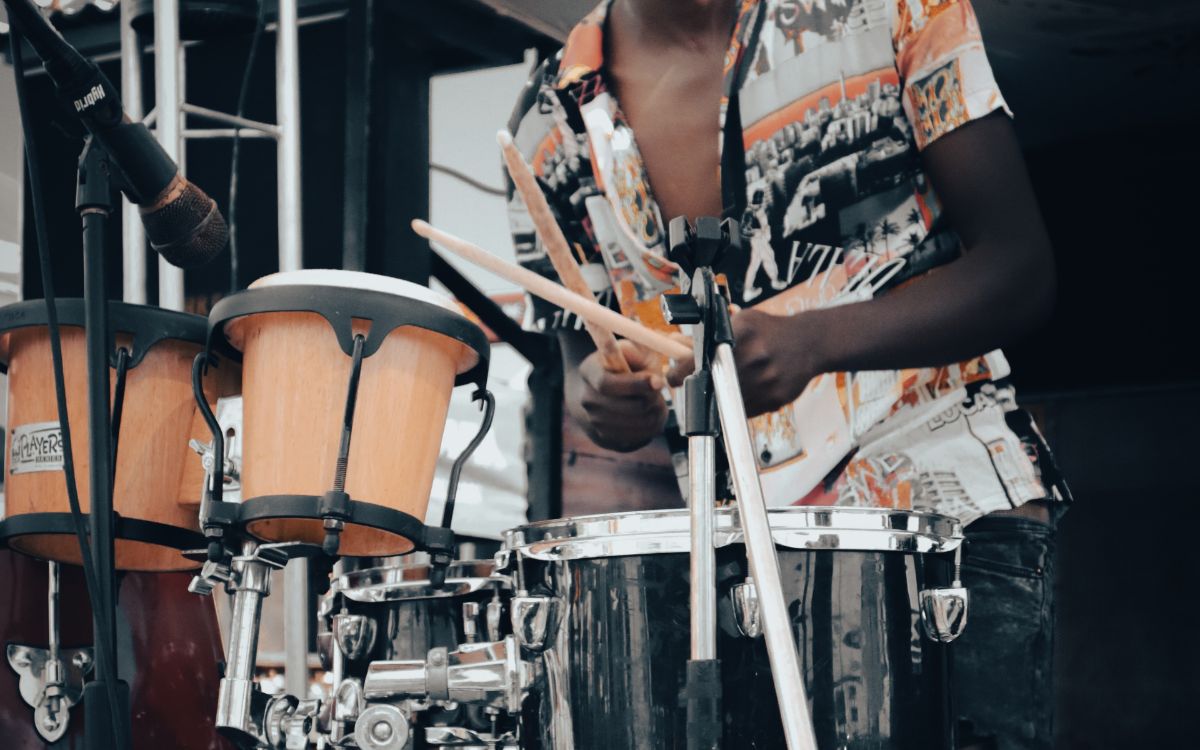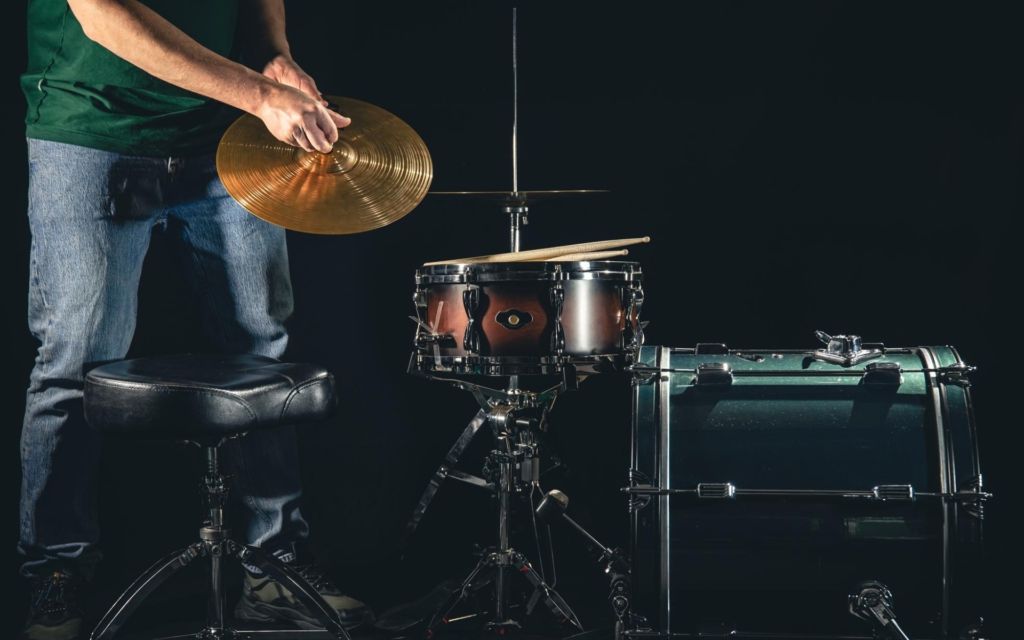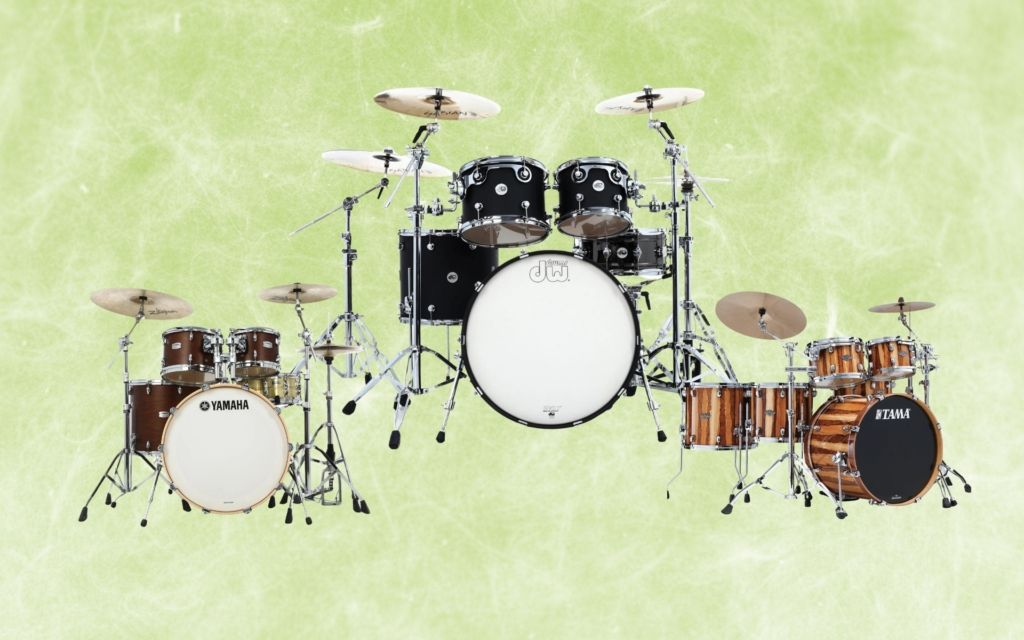Drums and percussion often go hand-in-hand. Drums are a percussive instrument, technically making all drummer percussionists of sorts. However, you get percussionists that don’t play the drums, making these terms a bit confusing at times.
The biggest difference between a drummer and a percussionist is that drummers play a drum set, while percussionists play a range of multiple percussion instruments. You can also have multiple percussionists in a band compared to one drummer.
We’re going to have a look at the difference between drums and percussion. We’ll also look at the roles that drummers and percussionists play in bands along with how easy it is for musicians to switch between these roles.
Contents
Drummers

Drummers are musicians who play the drum kit. If you ever see someone sitting behind a large setup with drums, hardware, and cymbals, you’ll know that that’s a drummer. You’ll find a drummer in most bands laying down the beats from the back.
The great thing about drumming is that a drummer is needed in most music settings. So, drummers get to play fairly often.
Drummers often end up paying more money for gear than percussionists as drum kits can get very pricey. This is especially true when their drum kits keep getting upgraded with new drums and cymbals.
Percussionists

While drummers can still be considered percussionists, the term refers to anyone who plays percussive instruments that aren’t a drum set. Percussionists typically play more than one instrument, having a wide array of bits and pieces to play when needed.
You won’t find percussionists as commonly as you will find drummers. However, there are a few environments where percussionists are more common than others. This would include jazz bands, Latin bands, and orchestras.
The great thing about percussionists is that they can play with any band and add some extra flair. Since most percussion instruments aren’t melodic, they don’t get in the way of the music. Instead, they add rhythmic complexity that often enhances the music.
Drummer vs Percussionist
Role in a Band
Drummers act as the primary timekeepers in band settings. They’re the ones who need to hold the groove so that the rest of the band has a steady pulse to lean on. Drummers also often lead the transitions in songs. They’ll play a fill that will alert the band that the song is moving to the next part.
While percussionists also keep time occasionally, they’re not as utilized as drummers are for that purpose. Percussionists will play varying rhythms that will drive the song forward. Since a percussionist plays multiple instruments at different times, they have the ability to fill in frequency ranges that are missing in certain song parts.
As I said earlier, not every band needs a percussionist. However, percussion makes a huge difference in a band environment that is missed if it’s not there. The best example of this can be seen in the band, Snarky Puppy.
If you skip to 05:20 in the video, you can hear how effective the percussion playing from Nate Werth is underneath the drums. If those sounds weren’t there, the song would sound fairly empty.
There are plenty more examples of how effective percussion can be. Try focusing on listening to the percussion parts of your favorite songs the next time you hear them. You’ll be surprised at how subtly effective they are.
Instruments Played
A drummer in a band will only play one instrument – the drum kit. A typical drum set will have 3 to 4 drums and a group of cymbals that vary in size. All drummers tend to develop their own taste in how their drum kits are set up. So, drummers start developing a unique drum kit sound once they choose their preferred drums and cymbal setup.
There is a long list of instruments that a percussionist can play. You can technically hit anything that makes a noise to be a percussionist in a band. However, there are a few standard instruments that percussionists generally use.
Here is a list of them:
- Tambourines
- Congas
- Bongos
- Cajons
- Djembes
- Cowbells
- Shakers
- Woodblocks
- Xylophones
- Glockenspiels
- Timpani
Learning Curve
It would be fair to say that it is easier to learn to play percussion rather than learning to play the drums. That is especially true when it comes to small things like cowbells and shakers. Learning to play the djembe or a xylophone will take a bit longer, though.
Remember that a percussionist will have to learn how to play all these instruments instead of only learning one as other types of musicians would. So, the learning curve may be just as steep.
However, learning to play percussion is a lot easier for already established drummers. That’s why you’ll see many drummers playing percussion in a band occasionally. The rhythmic skills you learn while drumming transfer seamlessly over to percussion playing.
The learning curve for drumming may be a bit steeper if you want to play very complicated things on the drums. Four-way coordination is no joke at the higher levels of drumming.
If you’re keen on playing drums and percussion, the best thing to do is nail the fundamentals on the drum kit and then transfer them over to percussion instruments.
Number of Players in a Band
Most bands will only have one drummer. There are a few progressive bands here and there that have multiple, but one is the golden number most of the time. On the other hand, a band can easily have multiple percussionists.
Since percussion instruments are so versatile, it’s often beneficial to have more than one percussionist playing parts. A good place to see this is in Latin bands.
Here’s a good video that practically shows how multiple percussionists can work together to create some awesome rhythmic patterns:
You can also have a drummer and a percussionist in a band. In fact, that’s usually your best combination in most settings!
Hybrid Drumming

Hybrid drumming is another term that you may have heard about at some point. This refers to when a drummer mixes electronics with their acoustic drum set. They’ll typically use an electronic drum pad, but they could also use pads that are connected to a drum module.
Hybrid drumming is a great way for a drummer to get some of the sounds that a percussionist would play. You can set an electronic drum pad to have different percussive sounds such as shakers, cowbells, and gongs. Then you can simply play those sounds by hitting a pad with a drumstick.
These electronic percussion pads also allow drummers to play digital sounds that wouldn’t be able to be produced acoustically. This is especially important in modern music where electronic sounds are so widely used.
Classical Percussion
Classical percussionists are slightly different from percussionists that play in pop and party bands. A classical orchestra has an entire percussion section that consists of multiple musicians. These percussionists will share the playing duties from compositions, and they usually move around a lot to get to all the instruments around them.
You’ll find a few percussion instruments in an orchestra that you won’t often find in other band settings. This includes concert snare drums, concert bass drums, timpani, and xylophones.
Percussionists are more commonly found in orchestras than drummers are. This is the one place where a full drum kit may sound a bit out of place.
Conclusion
So, when thinking about percussionist vs drummer, know that the drummer provides the rhythmic pulse while the percussionist adds a bit of flavor to it. These two types of musicians of very closely connected, and drummers often end up being percussionists as well.
It may seem a bit easier to become a percussionist, but there are certain percussion instruments that have higher learning curves than others.









